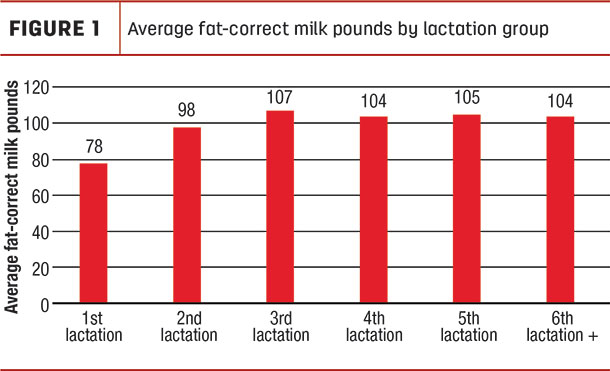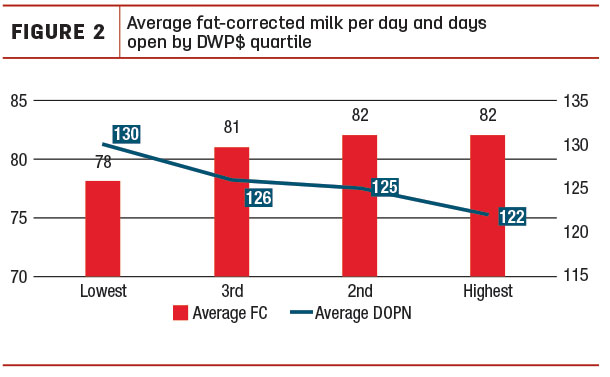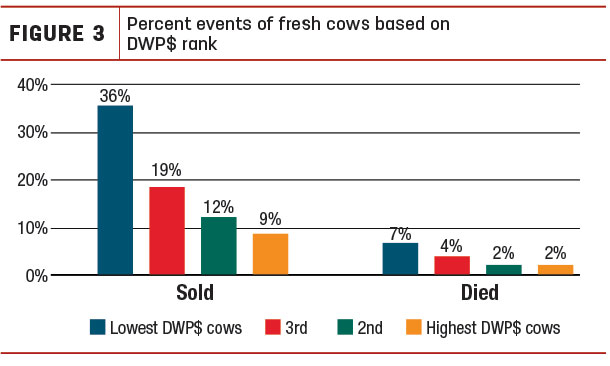If you have an open employment position on your dairy, your first step is likely to review qualifications in résumés or applications and then extend interviews, and in many cases, you don’t extend interviews to every candidate.
The same process should be true for potential herd replacements, which are also important future employees on your dairy.
Advancements in data and the drive for efficiency have led focus to identifying the most profitable cows to fill available slots in the dairy herd.
For most U.S. dairy owners, the true cost to raise a heifer from birth to first calving often exceeds $2,000 per heifer. To cover your investment in heifer-rearing costs, a replacement heifer needs to stay in production well into her second lactation, based on average milk production. Developing a herd with a higher percentage of healthy and productive third-lactation-and-older cows is critical to dairy profitability. The simple reality is: Most second-lactation-and-older cows produce more milk than their first-lactation herdmates (Figure 1).

Along with good herd management practices, using an aggressive genetic development plan will provide dairy owners with a solid foundation for creating future herd replacements that have what it takes to be more profitable. Using pedigree or genomic data, it is possible to determine which heifers have the highest profit potential. Based on Dairy Wellness Profit Dollars (DWP$) quartile analysis of first-lactation cows in the Figure 2 and 3 examples, the higher DWP$ heifers are more productive, have lower days open and are much more likely to stay in the herd.


In recent years, we have seen improvements in calf survival and a reduction in herd turnover rate through improvements in reproduction, cow comfort and overall herd management. These advancements have led to a surplus of heifers at many dairy operations, providing dairy owners with options in choosing which heifers to keep and invest in as future herd replacements.
One of the long-held standards in the dairy industry is: All heifers have better genetic potential than older cows, so should be given a chance and a slot in the barn. With today’s performance analysis, we are learning that not all heifers born deserve a job interview. By analyzing the results from a genetic audit, dairies may see there are adequate cows and heifers of elite genetic merit to meet stocking needs.
There are several ways to maximize future genetics in your operation:
- Invest in the best sires you can afford. The return on investment for using the best genetics is significant.
- Utilizing an index with enhanced selection focus on wellness traits, such as DWP$, can increase the percentage of cows that are more productive, reproductively sound and stay healthy to increase lifetime production.
- Determine the number of replacements you need to maintain your future herd size goals and develop a plan to generate future herd replacements from the highest-genetic-rank cows and heifers in your operation.
- Culling lower-genetic-ranking heifers will provide dairy owners with additional resources to invest only in the best future herd replacements and increase overall genetic potential in the operation.
- The planning needs to obtain the best possible genetic development of future herd replacements is unique for each dairy operation. Your genetic supplier should be equipped to help you develop a genetic plan to ensure you have the right number of future herd replacements that consistently offer the highest genetic potential.





